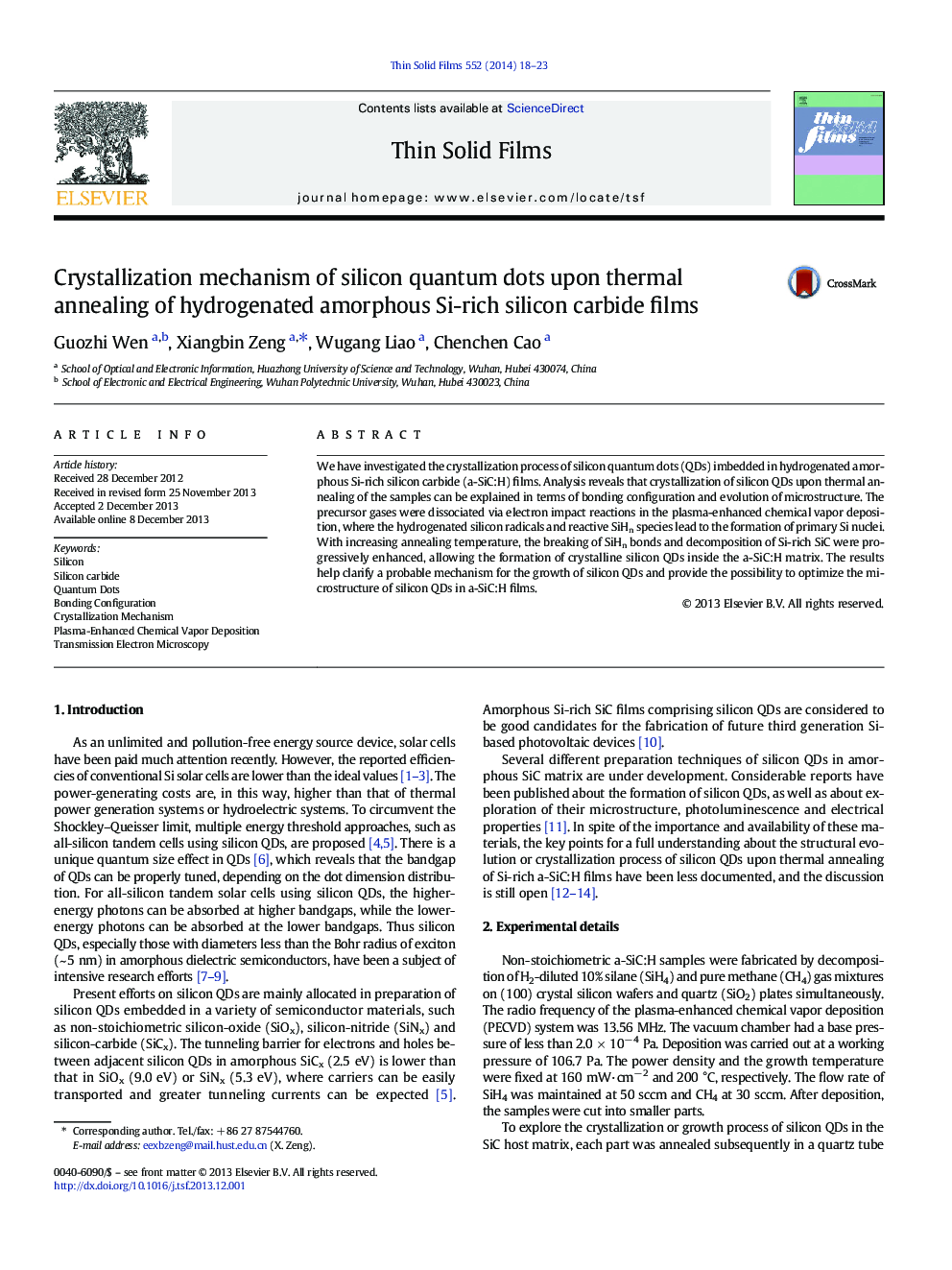| Article ID | Journal | Published Year | Pages | File Type |
|---|---|---|---|---|
| 1665678 | Thin Solid Films | 2014 | 6 Pages |
•Si-rich SiC samples are grown by plasma-enhanced chemical vapor deposition.•Silicon radicals and reactive SiHn (n = 1,2,3) exist in the as-grown samples.•Annealing temperature induces the growth of crystalline silicon quantum dots.•Carbon atoms are incorporated in the formation of SiC and CH bonds in the matrix.
We have investigated the crystallization process of silicon quantum dots (QDs) imbedded in hydrogenated amorphous Si-rich silicon carbide (a-SiC:H) films. Analysis reveals that crystallization of silicon QDs upon thermal annealing of the samples can be explained in terms of bonding configuration and evolution of microstructure. The precursor gases were dissociated via electron impact reactions in the plasma-enhanced chemical vapor deposition, where the hydrogenated silicon radicals and reactive SiHn species lead to the formation of primary Si nuclei. With increasing annealing temperature, the breaking of SiHn bonds and decomposition of Si-rich SiC were progressively enhanced, allowing the formation of crystalline silicon QDs inside the a-SiC:H matrix. The results help clarify a probable mechanism for the growth of silicon QDs and provide the possibility to optimize the microstructure of silicon QDs in a-SiC:H films.
